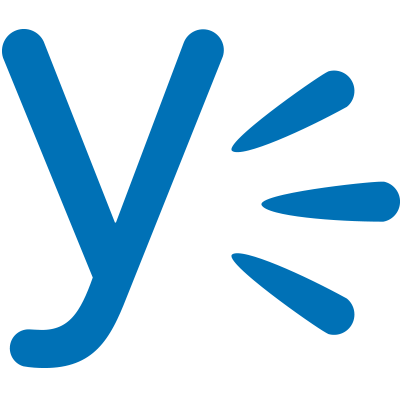Digital Risk Protection
In this era of digital transformation, the digital threat surface has expanded exponentially. Learn what modern-day digital risks are and how you can combat them with the right protective measures.
Begin your transformation to secure and compliant communication. Share your information so we can connect.

Download PDF
Executive Summary
Digital Risk Protection (DRP) is the practice of protecting third-party cloud channels from various forms of digital threat.
As part of digital transformation initiatives, enterprise organizations are increasingly dependent on social and digital channels for everyday productivity, customer engagement, and growth.
With this dependency comes the need to secure these channels against unauthorized access, malware, phishing, data loss, compliance violations, or account compromise.
Digital Risk Protection processes aim to secure these channels and aid in managing risk in digital transformation.
For the modern enterprise, a robust DRP stance is an absolute necessity to secure the technology that drives business growth and revenue.
Cloud Apps We Protect

























Digital transformation refers to the enterprise process of shifting from outdated applications, systems, and practices to more sophisticated, modern, and versatile business approaches and strategies. This seismic shift to digital is made possible by many advances in technology, particularly cloud computing.
Every forward-looking business is undertaking some degree of digital transformation and increasing their engagement on and with the cloud. Within every organization, social and digital cloud-based channels are now mission-critical, and used across multiple departments. These third party channels fall into two categories:
External: Customer-facing growth channels
External channels are the channels that marketing, sales, and customer experience teams use to drive engagement and growth: social media such as LinkedIn and Facebook, mobile chat apps like WhatsApp and more.
Internal: Service platforms
Internal channels are those technologies that companies rely on for operational efficiency and agility: collaboration platforms like Slack and Microsoft Teams, and larger suites like Salesforce, Veeva CRM, and SharePoint.
These new cloud channels are how work gets done. Embracing them is a core part of digital transformation strategies. Without these cloud channels, a modern-day business is destined to get left behind.
The increased use of these external and internal cloud channels means that the organizational threat surface has expanded. This new surface spans a variety of new applications, each with its own demands and requirements. Every cloud channel possesses a different owner, reporting into a different line of business: CMO, CHRO, CIO, CRO, or CXO.
Digital risks threaten not only the security of enterprises--they threaten the project of digital transformation itself. Organizations that want to fully embrace digital transformation need to embrace these cloud channels as rapidly as possible. But savvy security personnel can see their lack of visibility and control, and they have no choice but to insist that the company put the brakes on.
Security personnel donʼt want to be the “No” people. But unless they feel totally confident in their ability to battle modern digital security risk, they cannot greenlight a full-blown digital transformation project.
Beyond the Perimeter
As businesses undergo digital transformation, the attack surface expands well beyond the perimeter. Traditional perimeter-based defenses still have their uses. But their coverage canʼt extend to where digital communication channels and social media platforms are. Companies are facing a new and increasingly challenging digital risk landscape. Why? Because of fundamental shifts in the nature of cybersecurity.
The Internet is Too Big
In the past, you had a demarcated area which you patrolled and policed. You had your IT infrastructure to worry about, and that was it. But now, you have to worry about the entire internet. All the platforms and channels your enterprise utilizes, and all the individual users out there interacting with various areas of your digital footprint, are now, in effect, part of your enterprise, because armful or noncompliant content, for which your enterprise is responsible, could be
lurking anywhere.
On a fake Facebook page you donʼt know about; in the private messages of a wayward employee; deep in a forum - all these dark places must be brought to light; you have be able to see before you can control. Traditional security tools have no way to cast their net far and wide enough to scan all of cyberspace for possible digital transformation risks. They simply canʼt do it because they were not built for this purpose. Properly mitigating digital risk means having a holistic view of everything occurring with an enterprise's digital sphere. Without dedicated tools purpose-built for the new threat landscape, this is impossible.
Cloud Platforms Have Inherent Visibility Issues
When all enterprise communications happened within the perimeter, there was no visibility challenge. Intranets could be scanned, internal communications could be checked. Companies could be sure that there was oversight on all, or at least most, of the important communications their staff were involved in.
Teams need to institute a fully configurable policy engine that can oversee, capture and preserve a complete digital record of communications to an archive in order to mitigate digital security risk. But they canʼt even see, let alone act on, what is going on in the third-party cloud channels where their company’s teams are spending a huge part of their day. And they donʼt own any of the data being produced in those channels.
Human Intelligence Canʼt Keep Up
Already, human security teams are making serious compromises in order to keep up with the flow of digital data they are meant to police. We see this with the practice of sampling.
Risk and compliance teams cannot possibly review all of a given set of digital communications; there is simply too much data, and not enough bodies to trawl through it all. So what do they do instead? Rather than assessing 100% of communications, they assess 7-10% of them. Then they extrapolate the findings from this 10% out to the other 90%.
While this has a certain logic, it is an incomplete and even dangerous way of supervising communications. Similarly, traditional security controls are often based on patterns, signatures, or heuristics. When a new attack signature, virus pattern or file-hash is detected, there is a certain time-lag between the initial discovery and the required system update. Often, human workers manning these systems are too slow to respond. They are moving as fast as humanly possible, but they would have to be superhumans to keep up with today’s data tsunami.
For example, one of our customers produces between 40,000 to 70,000 Slack messages every day. For a global pharmaceutical company, a regional sales team of 450 people generated over 116,000 WhatsApp messages in a single month.
Only AI-driven digital risk solutions can perpetually monitor every relevant digital endpoint. Only an AI-driven digital risk solution can institute detection policies that reliably capture every concerning event in line with customizable policies.
The digital front remains unrestricted, unmonitored, and unmanaged. Gaining the visibility required for true governance and policy enforcement is impossible without tools purpose-built for this new frontier. Fraudulent or fake channels and accounts can proliferate, without the organization even knowing it. Itʼs impossible to stop what you canʼt see.
When your enterprise security is reliant on external, unregulated channels, you have a problem. The data and intel necessary for managing risk in digital transformation and staying secure and compliant is not within your sphere of influence.
The Future of Digital Risk Protection
Effective digital risk protection is not just about security. By ensuring security, digital risk protection supercharges processes that are tied directly to growth. Digital channels are the modern drivers of revenue, R&D and customer engagement.
When enterprise security teams possess the digital risk solutions they need to get visibility over the whole infrastructure including the new threat surface, they can say to teams: Go ahead. Move fast, go mobile-first, download the apps you need.
According to Pricewaterhouse Coopersʼ 2020 Global Digital IQ report, only 5% of companies are successfully undertaking digital transformation. One of the four key things that distinguishes these “Transcenders” is that they are able to build resilience.
The future is here, and it is rife with new forms of digital risk. Resilience is impossible to build without a structured and robust system of dealing with a new generation of cyber concerns.
But all is not lost. Where there is challenge, there is opportunity Once enterprises can gain the required visibility and controls, they can leverage digital risk protection as a new driver of digital transformation. Policing the complete digital threat surface becomes not just a defensive tactic, but an offensive strategy--one that can help win new revenue and new customers. It all starts with gaining total visibility into all the channels your executives and employees use for business today.
Managing risk in digital transformation requires that monitoring, archiving, and execution be driven by a centralized system. This way, data isnʼt siloed, so you can avoid proliferating points of failure and risk. Digital risk protection needs to be driven from a central command hub where an enterpriseʼs entire digital footprint can be seen and proactively managed.
Secure Human Connections
Ready to see how SafeGuard Cyber secures modern communication apps wherever they exist?
Expert Insights on Cloud App Risks
Stay up-to-date on the latest social engineering, insider threats, and ransomware vulnerabilities.


